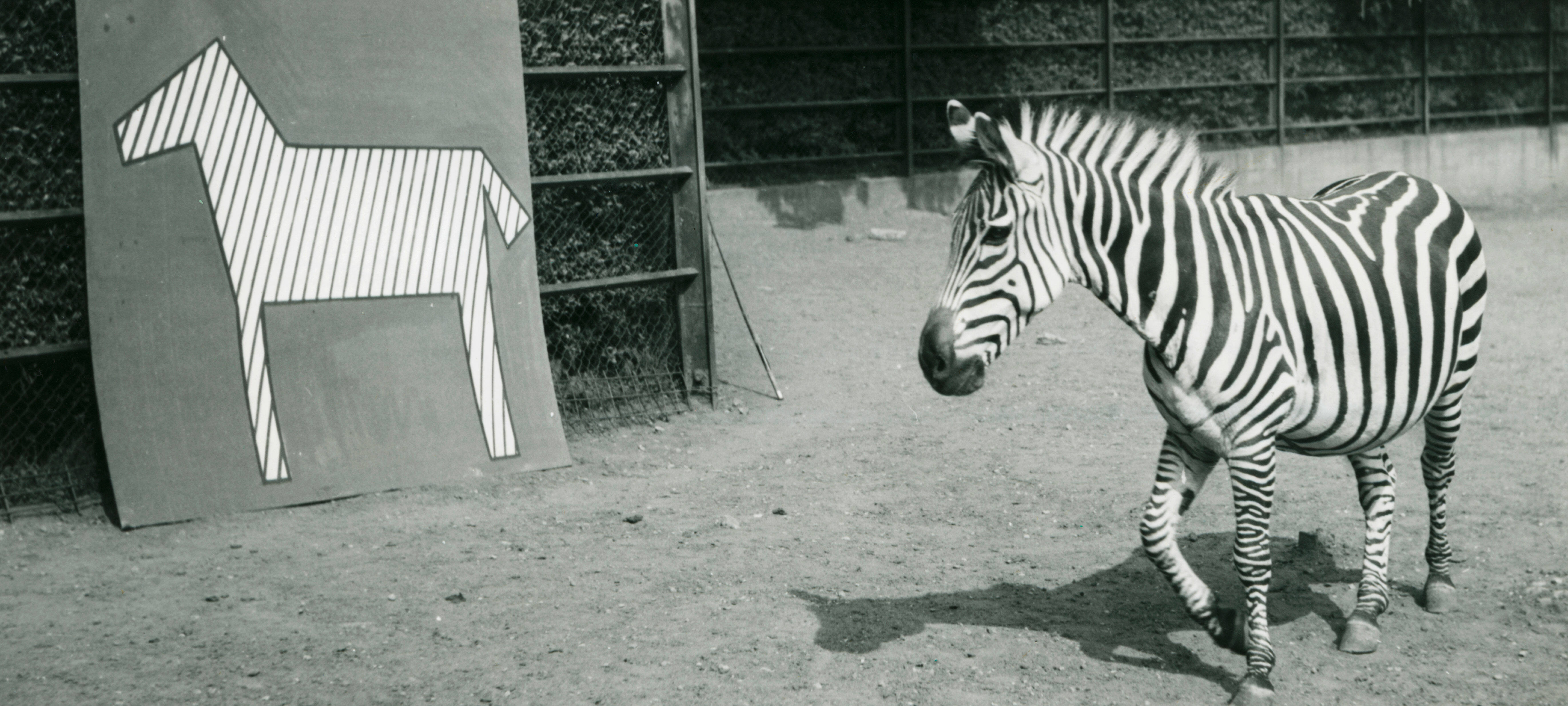Übergordnete Werke und Veranstaltungen
Utility Animals, Useless Animals
Personen
Media
Practically any animal that can be tamed can be domesticated. Eipo – Umgang mit Schweinen (Eipo – Living With Pigs), a documentary by the ethologist Irenäus Eibl-Eibesfeldt, follows the affectionate interaction between the Eipo, a population in West New Guinea, and their pigs, an interaction that extends to shared sleeping places, a form of cohabitation that could still be observed in rural areas in Europe into the early 20th century, e.g. in Russia.
The signification of utility animals has changed more than any other animal in the course of the history of film. No-one crosses the Alps anymore with horses or donkeys. But not only these animals have been made unemployed. In The Dog and His Various Merits from 1908, dogs still work at drawing carts for milkmen, whereas in 2004 they have become the subject of Ken Wardrop's film Useless Dog. Not all filmmakers find them as useless as all that. In New and Used Car Salesman, William Wegman points out a perennial function for dogs that many animals could perform. Someone who knows how to get on well with a dog may also be capable of winning enough customer confidence to sell used cars. The fact that Wegman's dog is a purebred, a Weimaraner, increases the chances of sealing the deal. The connection between purebreds and used cars acquires a deeper significance in Wegman's film when seen against the background of the history of purebreds.
The purebred dog, selected for extreme homogeneity, has historically been a status symbol in developed cultures, from the Pekinese, the Chinese palace dogs, to the hunting dogs of the Middle Ages, who could only be kept by members of the court. Social standing is mirrored in the dog to the point of forcing peasants to hinder the free gait of their lower class mutts by hanging a club around their necks or breaking their legs.
Not until the cities of the 17th century do the distinctions between high and low begin to soften. Dogs become fashionable accessories. This leads to new breeds adapted to the colours of the season. The emergence of the poodle in the Rococo is due to this trend. Since they persist beyond the season, the dogs wander from the salon into the street and into the hands of the common people, where they find employ as cart drawers as well as companions for lonesome humans. The number of stray dogs on the streets also rises. As a manifestation of this, Berlin added dog taxes to the system of dog tags in 1830, partly in order to decrease breeding rates.
The most important change in terms of film, however, applies to horses. Neither the clattering of horseshoes nor the shouting of drunken coachmen whose horses have once again bucked contributes any longer to the urban soundscape. The importance of this leap is still slowly being registered by cultural history. It can easily be illustrated by the example of Friedrich Nietzsche. Nietzsche's physical and intellectual breakdown in Turin was triggered by seeing a drunken coachman senselessly whipping his horse. Nietzsche, the philosopher to deny and damn pity, threw himself around the horse's neck in pity to protect it from the blows. In order to measure the gulf separating this event from the present it would suffice to imagine Nietzsche embracing a car.
In his film Araby (Thoroughbred Horses), another Polish director, Zbigniew Raplewski, shows where horses landed when they had become obsolete as a means of transport. In images without commentary, Raplewski shows the horses on a stud farm in Poland, the land of horse breeding. The film is a fine example of the Polish school of short documentary films, which do without images of people. At the end only there is a shot of a hand on a halter. Keeping animals is still not as effortless as that everywhere. The film Ein Viertel Schäferstündchen (One Quarter of a Shepherd's Hour), a documentary on a shepherdess in the GDR from Uwe Belz, will address the topic together with our guest, the shepherd Christian Winz from the estate of Krosigk.










